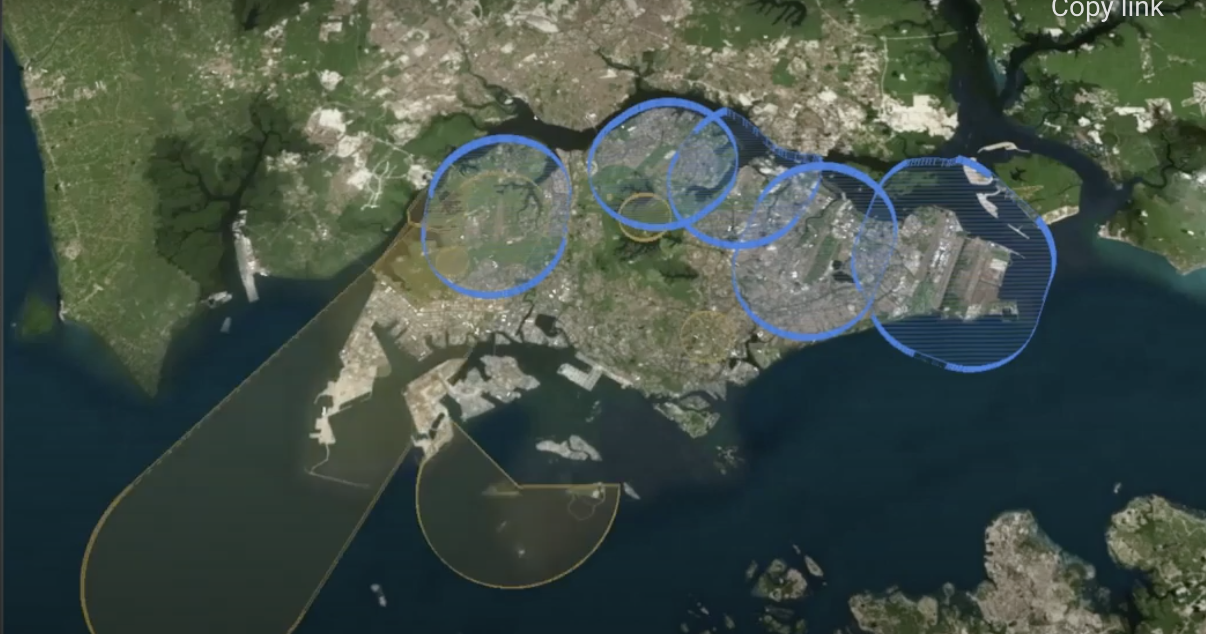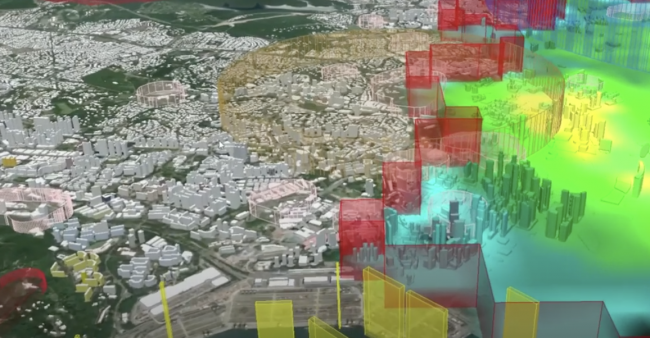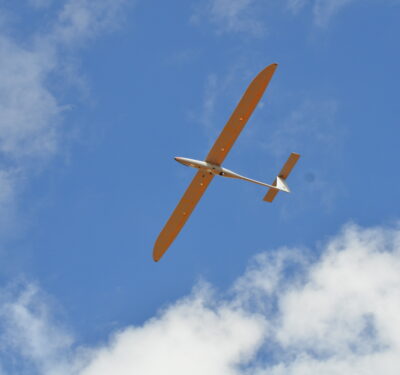OneSky and Nova Systems have completed a three-year project researching, prototyping, and implementing an Unmanned Traffic Management (UTM) system or the Civil Aviation Authority of Singapore (CAAS) and Singapore Ministry of Transport. The robust system functions in Singapore’s unique urban environments and advance urban air mobility (UAM) applications, including Beyond-Visual-Line-of-Sight (BVLOS) operations. ,
The companies developed and tested advanced UTM services, including: flight authorization, strategic deconfliction, conformance monitoring, real-time alerts, constraint management, and Remote Identification capabilities. This culminated in the final project milestone, as OneSky demonstrated those capabilities in a working UTM system through live BVLOS flight trails in the skies above Singapore.

Singapore aerial image with software overlays. All images courtesy Onesky.
“We started by studying the infrastructure in Singapore, and understanding the airspace challenges of implementing UTM in that environment, “ said Daniel Honaker, Head of International Implementation at OneSky. “That included looking closely at issues like LTE signal strength at altitude and GNSS performance in urban canyons. We modeled the systems involved and simulated their behavior, and then tested and validated our assumptions in two sets of live trials.”
OneSky’s platform is capable of adapting to complex, urban environments. The system is designed to incorporate many varied data sets into a single interface for improved situation awareness and decision making. “Our first step was to modify and add data sets that are relevant to the low level airspace in Singapore,” Daniel explained. “That included terrain data and building data for the geospatial base layers, airspace boundaries and restricted areas provided by CAAS, and live airspace data including weather services and ship tracking (AIS) data.”
Advanced UTM Operations and Services
The Singapore project allowed OneSky to explore advanced UTM operations and services like strategic deconfliction, dynamic rerouting, and conformance monitoring. “Some of these concepts had been talked about, but had not actually been demonstrated at the time,” Daniel said.
 Singapore includes dense urban areas with high-rise buildings combined with ever changing weather events. Contemporary UTM trials have successfully demonstrated strategic conflict detection during flight planning (FAA UPP2), but have not tackled the deconfliction problem. OneSky demonstrated strategic deconfliction during the flight planning process, and dynamic rerouting in the case of an unexpected constraint during operations: taking multiple data points into account to establish the safest possible alternative.
Singapore includes dense urban areas with high-rise buildings combined with ever changing weather events. Contemporary UTM trials have successfully demonstrated strategic conflict detection during flight planning (FAA UPP2), but have not tackled the deconfliction problem. OneSky demonstrated strategic deconfliction during the flight planning process, and dynamic rerouting in the case of an unexpected constraint during operations: taking multiple data points into account to establish the safest possible alternative.
“The UTM industry has laid the foundations for strategic deconfliction by standardizing the discovery and sharing of operations and airspace constraints. Everyone must share the same airspace representation before it’s possible to actively deconflict our operations from each other and the environment.” Dan continued. “We’re learning a lot about how to consider all of the constraints in an environment, and how that affects UTM, including: weather, terrain, public events, manned aircraft, and dynamic ground risk.
Conformance monitoring allows stakeholders to ensure that a flight is adhering to the operation’s reserved time and volume allowed by the appropriate authority, while the flight is in the air. In the case that a flight is non-conforming or is in contingency mode, actions are taken by the UTM to notify the operator as well as the rest of the UAS network in vicinity to the operation.
OneSky also integrated routing and scheduling algorithms from technology partner Nova Systems. Nova’s multi-agent routing and scheduling (MARS) application automatically deconflicts flight requests submitted by their flight management system (FMS). Together, OneSky and Nova were able to demonstrate in their final set of live trials, two USS systems capable of sharing operations and constraints, enabling deconflictions in real time.
 Since the project began, new ASTM standards have been introduced and new regulations, such as Remote ID, have emerged. OneSky has adapted throughout the project to incorporate those new standards, ensuring that the platform is compliant and as implementation-ready as possible for airspace regulators, operators and the entire industry. For Singapore’s aviation authority, the necessity for UTM is clear to enable safe drone flights: but drone operators in Singapore are now able to see the real benefits provided by a single usable interface that includes their aircraft telemetry and multiple other real-time data sources.
Since the project began, new ASTM standards have been introduced and new regulations, such as Remote ID, have emerged. OneSky has adapted throughout the project to incorporate those new standards, ensuring that the platform is compliant and as implementation-ready as possible for airspace regulators, operators and the entire industry. For Singapore’s aviation authority, the necessity for UTM is clear to enable safe drone flights: but drone operators in Singapore are now able to see the real benefits provided by a single usable interface that includes their aircraft telemetry and multiple other real-time data sources.






